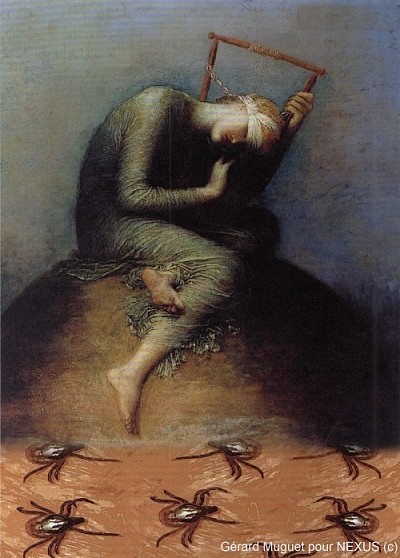Recent study claims that "scientists discovered bacterial fragments in the joints of mice treated for Lyme disease that may be the underlying cause of persistent arthritis-like joint pain following Lyme infections..."
Fragments of Lyme Disease Bacteria Linger in Joints After Treatment
more in Health & Wellness
»
Scientists
discovered bacterial fragments in the joints of mice treated for Lyme
disease that may be the underlying cause of persistent arthritis-like
joint pain following Lyme infections, says a report in the Journal of
Clinical Investigation.
Lyme disease is caused by Borrelia burgdorferi, a worm-shaped bacterium also called a spirochete that is transmitted by tick bites. There were more than 22,500 confirmed cases of Lyme disease and another 7,600 probable cases in the U.S. in 2010, according to the Centers for Disease Control and Prevention. Infections usually start with a skin rash but can damage the heart, joints, and nervous system. Lingering joint pain affects up to 25% of people, despite effective treatment with antibiotics.
Yale University researchers induced Lyme infections in mice with impaired immune systems and control mice. Both groups received either antibiotic-treated drinking water sweetened with sugar or sweetened water only for 30 days. The antibiotics killed Lyme bacteria in control mice and all but one of the immune-compromised mice; Lyme bacteria persisted in untreated mice.
Researchers found remnants of Lyme spirochetes in the knee joints of all antibiotic-treated mice, indicating the antibiotics eliminated the bacteria but not the residual debris. Spirochetes were found adjacent to ear cartilage in most of the mice. These bacterial deposits were capable of triggering an inflammatory response but not a full-blown Lyme infection, the study showed.
Caveat: The research hasn't been tested in humans.
—Ann Lukits Title: Spirochete antigens persist near cartilage after murine Lyme borreliosis therapy
Lyme disease is caused by Borrelia burgdorferi, a worm-shaped bacterium also called a spirochete that is transmitted by tick bites. There were more than 22,500 confirmed cases of Lyme disease and another 7,600 probable cases in the U.S. in 2010, according to the Centers for Disease Control and Prevention. Infections usually start with a skin rash but can damage the heart, joints, and nervous system. Lingering joint pain affects up to 25% of people, despite effective treatment with antibiotics.
Yale University researchers induced Lyme infections in mice with impaired immune systems and control mice. Both groups received either antibiotic-treated drinking water sweetened with sugar or sweetened water only for 30 days. The antibiotics killed Lyme bacteria in control mice and all but one of the immune-compromised mice; Lyme bacteria persisted in untreated mice.
Researchers found remnants of Lyme spirochetes in the knee joints of all antibiotic-treated mice, indicating the antibiotics eliminated the bacteria but not the residual debris. Spirochetes were found adjacent to ear cartilage in most of the mice. These bacterial deposits were capable of triggering an inflammatory response but not a full-blown Lyme infection, the study showed.
Caveat: The research hasn't been tested in humans.
—Ann Lukits Title: Spirochete antigens persist near cartilage after murine Lyme borreliosis therapy
A version of this article appeared July 31,
2012, on page D4 in the U.S. edition of The Wall Street Journal, with
the headline: After Lyme Disease Treatment, Bacterial Debris Lingers in
Joints.
